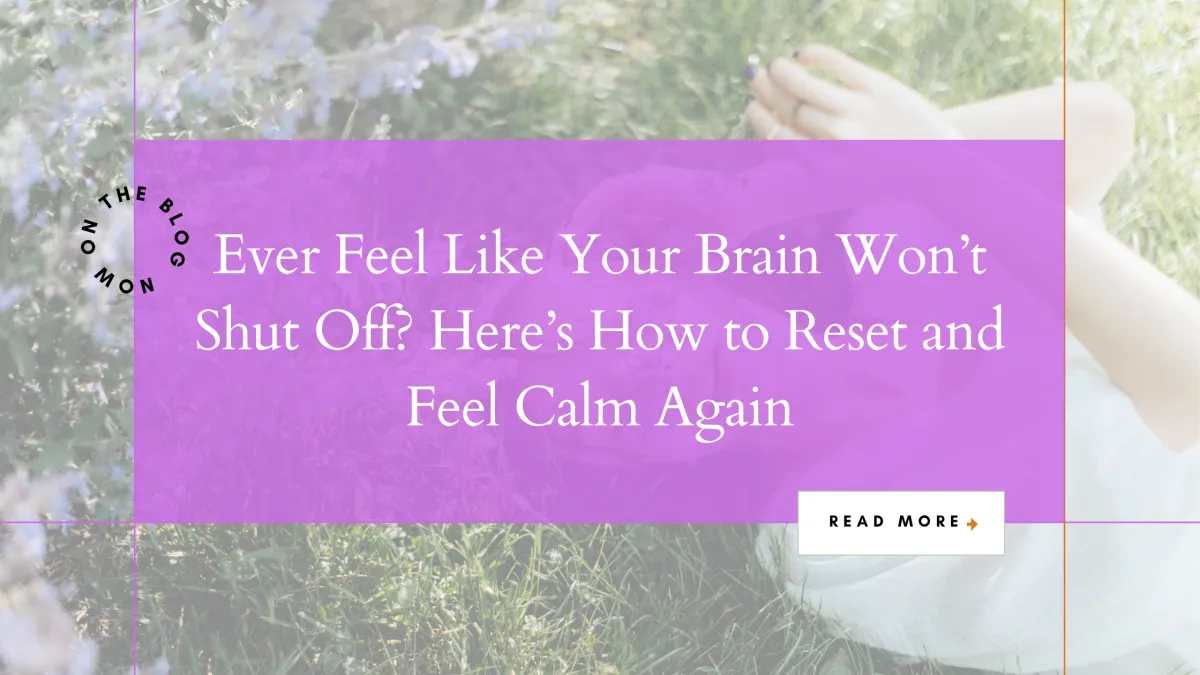
Ever Feel Like Your Brain Won’t Shut Off? Here’s How to Reset and Feel Calm Again
Let’s be honest. Some days your brain just won’t stop. You’re juggling deadlines, decisions, and worries that seem to multiply overnight. You’re trying to stay calm, but your thoughts are racing, your heart’s pounding, and your patience is paper-thin.
I get it. I’ve been there too. That’s exactly why I joined Dr. Christopher Oseh for the Mental Fitness Edge Summit 2025 — to share how you can actually hit the reset button on your stress response and find calm and clarity, even when life feels like too much.
In that interview, I introduced one of my favorite tools, the Mind CPR Method. It’s a simple, science-backed framework I created to help people handle stress in real time with calm, clarity, and control. If you’ve been feeling overwhelmed lately, this might just change how you handle pressure.
WATCH THE FULL INTERVIEW HERE:
Using the Mind CPR Method to Tap Into Your Brain’s Power
to Stay Calm/Confident Under Pressure
My Journey: From Burnout to Breakthrough
Before I ever taught the Mind CPR Method, I had to learn it the hard way.
A few years ago, I was living the classic high-achiever’s life: constantly rushing, always helping others, and never really pausing to help myself. I thought I could just push through the exhaustion. Then one day, my body made the choice for me.
I fell asleep at the wheel and got into a car accident.
I walked away with a broken arm and a life-changing wake-up call.
That recovery period forced me to slow down. For the first time, I had space to breathe and reflect. I realized that stress management isn’t a luxury; it’s a lifeline. And most of us were never taught how to handle stress in a healthy, sustainable way.
That’s when I began creating what would later become Mind CPR, a kind of mental first aid you can use anytime you feel overwhelmed, anxious, or stuck in a stress spiral.
The Mind CPR Method
Think of it as CPR for your mind.
C – Calm the Body
P – Process Your Thoughts
R – Respond with Intention
Let’s break it down.
1. Calm the Body
When stress hits, your body takes over. Your heart races, your breathing gets shallow, and your muscles tense up. That’s your body’s built-in alarm system, but if you never switch it off, you’ll stay stuck in survival mode.
The first step is to calm your body so your brain can catch up.
Try box breathing. It’s simple and effective:
Inhale for 4 counts
Hold for 4
Exhale for 4
Pause for 4
Repeat that a few times. Even Dr. Oseh said during our conversation, “It’s quite relaxing, really.”
Another favorite is the 5-4-3-2-1 grounding technique.
Name five things you can see, four you can touch, three you can hear, two you can smell, and one you can taste. It’s a quick way to bring yourself back to the present moment when your mind starts spinning.
2. Process Your Thoughts
Once your body has settled, it’s time to check in with what’s going on in your mind.
I like using a simple framework called ABCDE:
A – Activating event: What just happened?
B – Belief: What story are you telling yourself about it?
C – Consequence: How does that belief make you feel?
D – Dispute: Is it true? Can you reframe it?
E – Effect: Notice how your mindset shifts.
For example, if your first thought is, “What if I mess up?”, reframe it to, “I’ve prepared for this, and even if I pause, I’ll still come across as calm and confident.”
This one shift helps you take back control. You stop believing every anxious thought and start responding with perspective.
3. Respond with Intention
When your body is calm and your thoughts are clear, you can finally choose how you want to respond.
I always remind myself to walk tall, lead with curiosity, and focus on delivering value, not perfection.
That mindset changes everything. You stop reacting out of fear and start showing up in alignment with your values.
My Favorite Daily Ritual for Resilience
Mind CPR helps you manage stress in the moment, but lasting resilience comes from what you do every day.
Here’s a simple three-minute morning ritual I shared during the summit that can make a big difference:
One minute of deep breathing
Write down one empowering affirmation or intention
Set one small goal that aligns with your values
It’s quick, grounding, and powerful. When you start your day centered instead of rushed, you move through the world with more focus and calm.
The Counterintuitive Lesson: Make Anxiety Your Ally
Here’s the truth that surprises most people: stop fighting anxiety.
Anxiety isn’t the enemy. It’s information. It’s your body’s way of saying, “Hey, this matters to you.” When you get curious instead of trying to push it away, anxiety becomes your guide instead of your jailer.
I often say, “Anxiety is like a monster. The more you run, the bigger it gets.” But when you turn toward it with curiosity and compassion, it starts to shrink.
You Are Not Your Anxiety
If there’s one thing I hope people remember from my talk, it’s this: you are not your anxiety.
You’re a whole, capable person with wisdom, resilience, and strength inside you. Strengthen what’s working, be gentle with what’s not, and keep showing up for yourself, even on the hard days.
If you want to dive deeper into the science and tools behind everything I’ve shared, you’ll find it all in my book, Ultimate Toolkit to Rewire Your Anxious Brain.
It’s filled with practical, evidence-based exercises to help you calm anxiety, quiet racing thoughts, and build emotional resilience that lasts.
👉 Learn more about the book here and start your journey toward a calmer, more confident you.
Here’s to your calm, confidence, and lasting emotional resilience.
